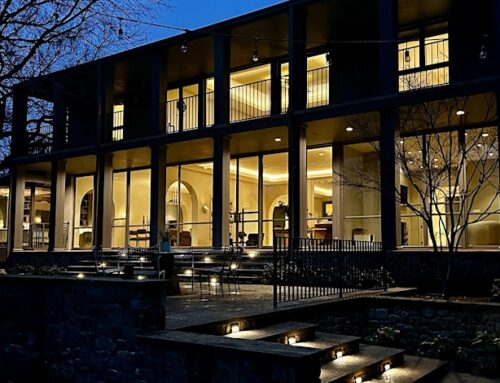Kim Semyan is a serious nature-lover. You can tell this because she’s able to find a soft spot for even the most hated and dreaded of creatures.
“I believe every creature on this Earth has a purpose,” she says. “Even the mosquitoes, and I hate mosquitoes. I’d nuke them if I could.”
She pauses, second-guessing her own words.
“But then what would frogs eat? And what’s the main staple of a purple marten? Mosquitoes.”
Spend any time with Semyan, and you’ll hear lots of interesting minutiae about critters and plants. What’s the only bird that can walk backward? Woodpeckers, she’ll convey with wonder, and then go on to wax poetic about the aphid-devouring powers of ladybugs. Take a tour of her yard and she’ll point out which greenery is for nesting, which is for cover, which provides food and which are larval host plants.
She knows the natural order of everything in her yard, and that’s no small feat considering it’s filled with upward of 50 varieties of flowers, plants, shrubs, trees and vines, almost all of which are
Somewhat surprisingly, Semyan and her husband, John, have only lived in their Preston Hollow home a short time. They moved here three years ago after a stint in Stonebriar. It was there that Semyan, who shows horses and also volunteers at the
In Stonebriar, the Semyans lived in new development near the tributary of a large creek. Their neighborhood had something called a riparian zone, simply defined as the transitional area between aquatic and terrestrial space — a creek bed that is sometimes wet, sometimes dry. In the last few decades, riparian areas have received increased attention for the important role they play in the environment and for their rich ecological diversity.
“Our HOA didn’t know what to do with it [the riparian area],” Semyan says. “They thought only in terms of a manicured landscape, so they would weed whack the whole thing down to the dirt. But heavy rains would come, and the water would come flying through there, and it would just tear the dirt away because it had nothing to hold it up on banks. So the banks started falling in. We found after about 18 months the erosion was horrendous.”
Trying to save the creek bed, Semyan started a newsletter called the Riparian Review, aimed at explaining the ecosystem’s value to her neighbors.
“What I was doing,” she says now, “was educating myself.”
“I wrote the newsletter trying to educate people, trying to tell them that that space shouldn’t be treated like all the other places around the area of Stonebriar, in terms of environment and water usage and all that good stuff,” she says. “And in the process of trying to do the newsletter, I wrote special articles on things like Johnson grass, willows, poison ivy.
“And the more I got into it, the more I changed my own landscape. And I thought: If I ever have a chance to do my own landscape from the very ground up, I’m going to do it with the idea to make it a wildlife habitat.”
She got that chance when she and John took one of their frequent Sunday drives into the Preston Hollow area to look at new construction. They stopped outside a lot where only a frame had been put up, talked to the builder, saw the plans and were so impressed they decided to buy.
When they started on the yard with the help of their landscape designer, Carol Feldman, it was a blank slate. One of the first decisions they made was to plant a 125-year-old Mexican Plum Tree, salvaged from a site near Prosper,
“It’s kind of like a legacy tree,” Semyan says. “When my arborist saw it, he said: That’s the biggest Mexican Plum I’ve ever seen in my entire life.”
Today, the tree sits in the middle of a berm in the front yard, thriving and surrounded by flowering plants and shrubs such as Lantana (for bees and butterflies), Cigar Plant (“a hummingbird magnet”), Lindheimer Muhly Grass (a cover plant for birds) and many more.
The shaded backyard includes the greatest variety of flora and also a fountain where birds congregate. On the side of the house is a water garden that hosts goldfish, frogs, toads and attracts brilliantly colored dragonflies.
The application process to become a Best of Texas Backyard Habitat was extensive, Semyan says.
“It was a lot of work. You have to tell exactly what’s been planted, what it does, and when it does it. They want to see a diversity of things.
“Everything in our yard has a purpose,” she says.
But despite her words, her yard, her volunteer work and her past activism, Semyan maintains she’s not an environmentalist.
“I admire them very much, but I don’t think I am one,” she says. “I’m environmentally sensitive, and I bitch about development and preach and preach and preach — by destroying habitat, which we are gradually doing, we’re destroying the Earth.
“But,” she maintains, “I’m not an environmentalist. I’m a nature lover.”






